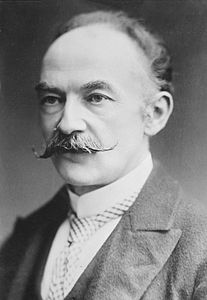Analysis of Heredity
Thomas Hardy 1840 (Stinsford) – 1928 (Dorchester, Dorset)
I am the family face;
Flesh perishes, I live on,
Projecting trait and trace
Through time to times anon,
And leaping from place to place
Over oblivion.
The years-heired feature that can
In curve and voice and eye
Despise the human span
Of durance -- that is I;
The eternal thing in man,
That heeds no call to die
| Scheme | ABABAX CDCDCD |
|---|---|
| Poetic Form | |
| Metre | 1101001 11111 010101 11111 0101111 100100 0111011 010101 010101 11111 0010101 111111 |
| Closest metre | Iambic trimeter |
| Characters | 319 |
| Words | 61 |
| Sentences | 2 |
| Stanzas | 2 |
| Stanza Lengths | 6, 6 |
| Lines Amount | 12 |
| Letters per line (avg) | 20 |
| Words per line (avg) | 5 |
| Letters per stanza (avg) | 122 |
| Words per stanza (avg) | 30 |
Font size:
Submitted on May 13, 2011
Modified on April 17, 2023
- 18 sec read
- 359 Views
Citation
Use the citation below to add this poem analysis to your bibliography:
Style:MLAChicagoAPA
"Heredity" Poetry.com. STANDS4 LLC, 2024. Web. 3 Jun 2024. <https://www.poetry.com/poem-analysis/36390/heredity>.


Discuss this Thomas Hardy poem analysis with the community:
Report Comment
We're doing our best to make sure our content is useful, accurate and safe.
If by any chance you spot an inappropriate comment while navigating through our website please use this form to let us know, and we'll take care of it shortly.
Attachment
You need to be logged in to favorite.
Log In